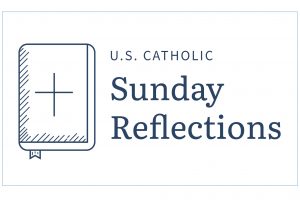A Lutheran bishop and I were reflecting on what will happen to the church as we begin to emerge, hopefully, from COVID-19. “Some theology could help,” he observed. “We should think more in terms of resurrection and not resuscitation.”
This pandemic has been traumatic. Hundreds of thousands of people have lost people they know and love. But all of us have experienced a massive disruption of our lives. It’s broken our assumed faith in normal securities and predictability, exposed our vulnerability to sickness and death, and revealed stark injustices in our society like a societal MRI, showing the sickness that is there beneath the surface.
None of this was predicted or planned for. Its onslaught was all largely out of our control, worsened by governmental dysfunction. I’m reminded of a line from a poem by David Whyte: “What you can plan is too small for you to live.” The pandemic, I think, has shown our addiction to predictability and security and how we seek these through mastering our present and future.
The resurgent Delta variant seems to mock our presumed mastery. The formidable challenge, instead, is to nurture the psychological and spiritual capacities necessary to foster resilience in the face of what we can’t anticipate or control.
“Post-traumatic stress syndrome” became part of our common vocabulary before the pandemic and then increasingly known as an experience rather than just a concept during it. But for years psychologists have also studied “post-traumatic growth,” which comes from the ability to adapt to situations which cannot be changed, often altering in positive ways one’s relationship to the world and ability to thrive. Researchers find that spirituality and networks of social support play important roles in such outcomes.
We should not be surprised. Christian spirituality finds its roots in humility more than mastery. Walking through traumas of darkness, desolation, and death that are beyond our control open pathways of resurrection and a new future. While our liturgy celebrates this, our lives often fail to embody what we declare.
One way to better understand this is to see our way forward, past the pandemic, as a pilgrimage. As contemplative author Mirabai Starr writes, “There is no map for the landscape of loss, no established itinerary, no cosmic checklist.” We can only proceed step by step.
Will they yearn for a nostalgic resuscitation or be open to signs of resurrection and new life?
Advertisement
Any process of transformational change, for persons or institutions, begins with disruption. Organizations are interrupted from doing business as usual. Open space has to be created, suspending normalcy and welcoming imagination and experimentation. When I served as the general secretary of the Reformed Church in America, my most challenging task was learning how to break normal patterns and disrupt predictable expectations so creative initiatives would have a chance to emerge.
By best estimates there are about 350,000 local congregations and parishes in the United States. Every one of them has been disrupted beyond their immediate control by COVID-19. The question now is: Wow will they respond? Will they yearn for a nostalgic resuscitation or be open to signs of resurrection and new life?
David Brooks, the New York Times columnist, recently explored why the post-World War II economies of Germany and Japan took off so dramatically while Great Britain’s lagged well behind. Historians observe that the devastation of the war destroyed the prevailing systems and interest groups in those vanquished nations that had stifled creative innovation. “The disruption opened space for something new,” writes Brooks.
The disruption of the pandemic, with its terrible toll of suffering and death, has also opened new space for the forms, practices, and expressions of religious life in the United States. But we need a contemplative pause to discern the way forward rather than retreating to past entrenched patterns of institutionalized Christianity, which often were slowly dying without us noticing. That’s why it’s wise to emerge from this pandemic as a pilgrimage.
My definition of pilgrimage is “a journey with holy purpose toward a place of spiritual significance.” That should be what we are all about as we look towards a post-COVID horizon. This pattern can be our guide.
First, all pilgrimages begin by walking away from our settled past and comfortable routines. That’s already been initiated for us, but courage is required to start down new paths leading us through unfamiliar terrain. We can’t predict what we might encounter. Instead, we should prepare ourselves for what will be discovered, and even revealed.
We should prepare ourselves for what will be discovered, and even revealed.
Second, we surrender our need to control. My recent book, Without Oars: Casting Off into a Life of Pilgrimage , draws its title from the true story of three Irish pilgrims. In the year 891, they cast off into the ocean in a small boat purposely without oars and with only enough provisions for seven days. They desired to “wander for the love of God.” On the seventh day they arrived at what is today Cornwall, England, convinced this was their intended destination.
The church needs more of that spirit going forward. When I consult these days with congregations, I’m much less likely to recommend they develop a five-year strategic plan. I’m much more likely to advise them to develop an internal culture with the capacity to thrive in the midst of future circumstances they can’t predict or plan for. Being resilient and attentive to the winds of change is more crucial than plotting a route which assumes we can control whatever currents and waves may lie ahead, unforeseen.
Third, a pilgrimage slows us down and opens up the space where deeper questions can emerge. A pilgrim walks away from perpetual distractions. We need such detachment from the constant flow of information, opinion, gossip, and news that streams through our screens and fills our minds—what author Cornel West calls “weapons of mass distraction.” A pilgrimage asks that we pay attention to where we pay attention. As we seek to step forth discerning the future shape of religious practice, we should embark on an inward journey fused with our outward journey.
Above all, a pilgrimage is an expression of embodied faith. It shapes our interior life not by what we say, think, or hear, but by where we walk. Lives become open to the present, to spirituality embedded in the creation, and to unexpected encounters with others on a common pathway.
Emerging from the pandemic while saturated with Zoom, people long for physicality. We want to touch, sense, and partake of real presence. Embracing our journey forward as a pilgrimage rather than a strategy will open the lives of our church communities to signs of new life in our midst. Treasured relationships, grounding practices of prayer, sacramental awe in ordinary gifts, the revelation of previously unrecognized pain and injustice, and vulnerable solidarity with others—all these and more can become portals for the new birth of the Spirit in our midst. But we’ll discover these only as we move step by step with the expectant spiritual curiosity of pilgrims.
How COVID will reshape religious practices and remake communities of faith is as yet only seen through a glass darkly. Some anecdotal hints can be detected, however. My guess is that fewer people will be found attending traditional church services. Those who attended out of habit or obligation have had a reprieve, and many will wonder why it was necessary after all. Those who return will have more intentionality. We may enter an era with far fewer, but more highly committed, persons active in congregations and parishes.
Practices and tools of spiritual formation are likely to shift. The bishop I spoke with shared how his synod had offered a variety of tools online for study and discipleship. Now he was hearing pleas to continue these even as in-person worship and classes resume. Faithful members have been pushed to become more creative and personally responsible for deepening their discipleship in virtual ways.
The ways and means for gathering together are shifting. Hybrid models may be woven into our future, changing our definitions of belonging. Emerging expressions of faith communities are likely to be less institutionalized and more appropriate to a context that has left Christendom behind.
The ways and means for gathering together are shifting.
In all these ways and others, the pandemic has accelerated trends that already were underway in U.S. religious life.
Beyond and beneath all this, an unforeseen wave of righteous racial reckoning has swept across our country, and deeply impacted our religious communities in the past year. My hope and prayer is that we will never be the same. Our pilgrimage ahead beckons us to embody the transformational changes now clearly required if we are to seek justice, love mercy, and walk humbly with our God. Resuscitation will not suffice; a resurrection, allowing us to begin again, holds our hope.
The way forward beyond COVID should also welcome actual pilgrimages. Uncertainty about travel still hovers over us as the Delta variant spreads. But hundreds of thousands of fully vaccinated people are removing belts, shoes, and laptops to get through TSA screening and board planes. Where are they going, and why? How might people of faith respond to their liberation from sheltering in place? Will we revert to being tourists, heading to Cabo San Lucas to sip margheritas? Or might we travel as pilgrims?
Spending time on the Camino de Santiago in Spain, St. Olav’s Way in Norway, visiting the Taize Community in France, or immersing yourself in the water of Lourdes can all be ways to walk out of the pandemic by stepping into embodied experiences of faith, grounded in physicality. Sites closer to home also beckon, such as the Sanctuario de Chimayo, with its holy dirt, 25 miles from my home in Santa Fe, New Mexico.
Pilgrimages as journeys of holy purpose can also express our desire to walk towards God’s justice. Just as the late John Lewis led civil rights pilgrimages to historic sites in the deep South, we can deepen our inward journey of racial reckoning by our outward destinations. Included could be the Legacy Museum and National Memorial for Peace and Justice, in Montgomery, Alabama. Founded by Bryon Stevenson of the Equal Justice Initiative, it documents the hundreds of lynching of blacks by whites in the enduring onslaught of white supremacy and calls us to confront the depth of our present moment. Similarly, the 16th Street Baptist Church in Birmingham with the nearby Civil Rights Institute, the Edmund Pettis Bridge in Selma, and countless more destinations of spiritual significance are places of pain, perseverance, and hope.
We can walk forward from the pandemic on pathways of pilgrimage. Through this dark night of the nation’s soul, we can search as pilgrims for promises of new life. As Isaiah reminds us, “Do not remember the former things, or consider the things of old. I am about to do a new thing; now it springs forth, do you not perceive it?”
Image: Unsplash/Matese Fields











Add comment